The old town Hoi An presents architecture from the 15th to the 19th century. Officially founded by a lord of the Nguyen family in 1595, it is an example of a well-preserved port city of Southeast Asia of that time. Under the Nguyen Dynasty, Hoi An became the most important trading port of the East Sea, especially for high-quality ceramics and silk. Known as “Hai Pho” or “Beach Resort”, it was a vital link between Europe and China, India and Japan, with ships coming from Thailand, Indonesia, Philippines, Spain, Portugal, Holland, Great Britain, and America. Hoi An’s commercial prowess could not be sustainable.
As the door of the Thu Bon River became increasingly muddy, ships could no longer reach the wharves. Its fate was sealed by the implementation of a policy of struggle against foreign trade and the collapse of the Nguyen regime. With the allocation of commercial rights to the French for another port city, Da Nang, Hoi An ceased to be a very active port at the end of the 18th century. On the bright side, this meant that the city had hardly been affected by the modernization for 200 years, which gave us all the wealth of historic buildings that we can visit and enjoy today. Hoi An has been a UNESCO World Heritage Site since 1999. It has many houses that show both local architectural styles and the influence of foreign cultures, including Chinese, Japanese and European.
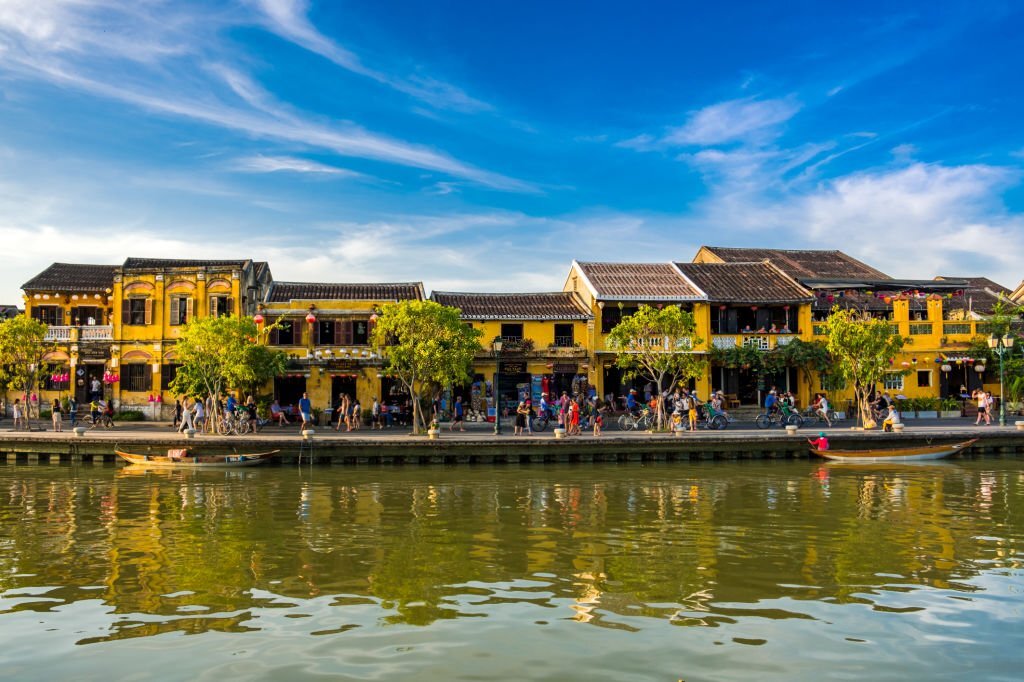
Due to its location in central Vietnam, Hoi An is a transition point between north and south, so its climate is affected by these two parts. The climate of Hoi An is tropical monsoon with two distinct seasons (dry season from February to September and the rainy season from October to January) and an average temperature of 29 ° C for most of the year.
The best time to visit Hoi An is from February to May, as the climate is pleasant with low humidity.
From May to September, it is still the dry season, but the temperature increases from 38 to 40°C in June / July. It is also the peak hour of local tourism, which is why this period is not the best time to visit the city.
From October to November, the climate in Hoi An is typical with constant showers. Floods and typhoons can occur during this period with heavy rains, especially in October. It is not recommended to travel to Hoi An at this time due to the presence of difficult weather conditions.
From December to January: the rains begin to weaken and the temperatures are lower between 19°C and 24°C in December, which is not a bad time to visit Hoi An. If you plan to go to Hoi An at that time, bring a light jacket for the night.
.jpg)
By plane
The main gateway to Hoi An is Da Nang International Airport (DAD). There are daily flights that last an hour from Hanoi and Ho Chi Minh City. The center of Hoi An is about a 45-minute drive from the airport. Taxis are plentiful and a taxi ride should cost 13-16 euros.
Tip: When booking your hotel in Hoi An, check to see if they have a pick-up service. This service usually costs around 10 euros. Another way to save your money is to negotiate with the taxi driver for a fixed price instead of having your mileage measured.
By bus
The tourist buses serve most of the main destinations to Hoi An. If you take a bus from Hanoi, it will probably be a night bus. You can purchase your tickets from most travel agencies.
From Da Nang, a city bus connects the bus station with 33 Dien Bien Phu and the Hoi An station every hour. It costs about 1 euro for one way.
Buses run daily to southern destinations such as Nha Trang, Da Lat, and Ho Chi Minh. It is advisable to book your ticket in advance to ensure good seats.
Walk in the old town of Hoi An
The city classified World Heritage by UNESCO, is magical, especially at night. When the sun goes down, the lights come on and Hoi An turns into a romantic city.
Cooking lessons
It’s not hard to fall in love with Vietnamese cuisine. A cooking class can help you understand how their flavors are prepared and create them yourself at home. Many restaurants offer cooking classes where you start picking herbs and then learn how to prepare food. Prices vary, but most of them cost between 350,000 and 550,000 VND (13 to 18 euros) for a market visit and a cooking class of 4 to 6 hours.
Vietnamese handicrafts
You cannot miss the Vietnamese handicraft shops or the famous lantern shops.
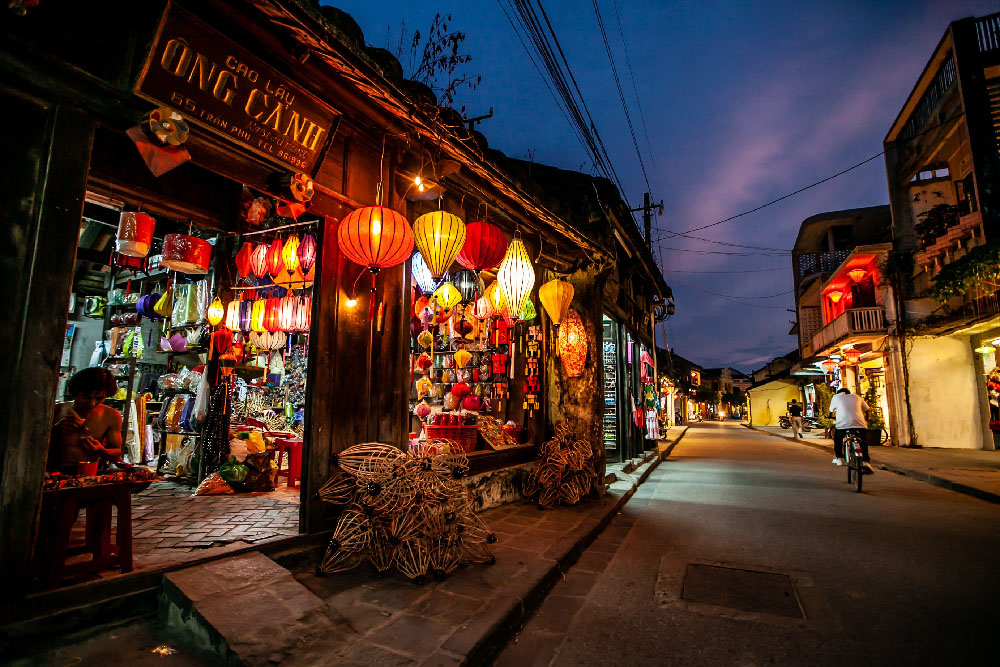
Sewing
The tailors in Hoi An are countless and the quality of the products is excellent. It is no coincidence that many engaged couples visit Vietnam. Not only to explore the country but also to get their dress and their suit tailored. A complete suite without shoes costs you 90 euros. You can even send it to your home by Vietnamese Post, by boat or plane, depending on what you want to pay for transportation and the speed you need it. Tripadvisor reviews can help you pick a good tailor.
Lunch at 1 euro
At the four corners of the street, we sell delicious sandwiches for less than one euro! It is a combination of delicious flavors: pork, egg, coriander, onion, carrot, Vietnamese mayonnaise, pork pie, chili sauce.
The Old Town
The old town of Hoi An is a well-preserved trading port dating from the 15th to the 19th century. Most of the historic buildings are built in traditional Chinese style and the roads are narrow. A single ticket allows you to enter the main attractions such as the Japanese Covered Bridge, the old houses and the Quan Cong Temple.
Japanese covered bridge
This bridge, also known as Cau Chua Pagoda, is one of the most visited monuments in the city. The bridge was built in the 17th century to link Tran Phu Street to Nguyen Thi Minh Khai Street. This allowed the Japanese district to be accessible from Chinese neighborhoods. The bridge is covered and looks like a Japanese pagoda. Its original style has been carefully preserved over the last 400 years. It is decorated and covered with ornate sculptures representing animals.
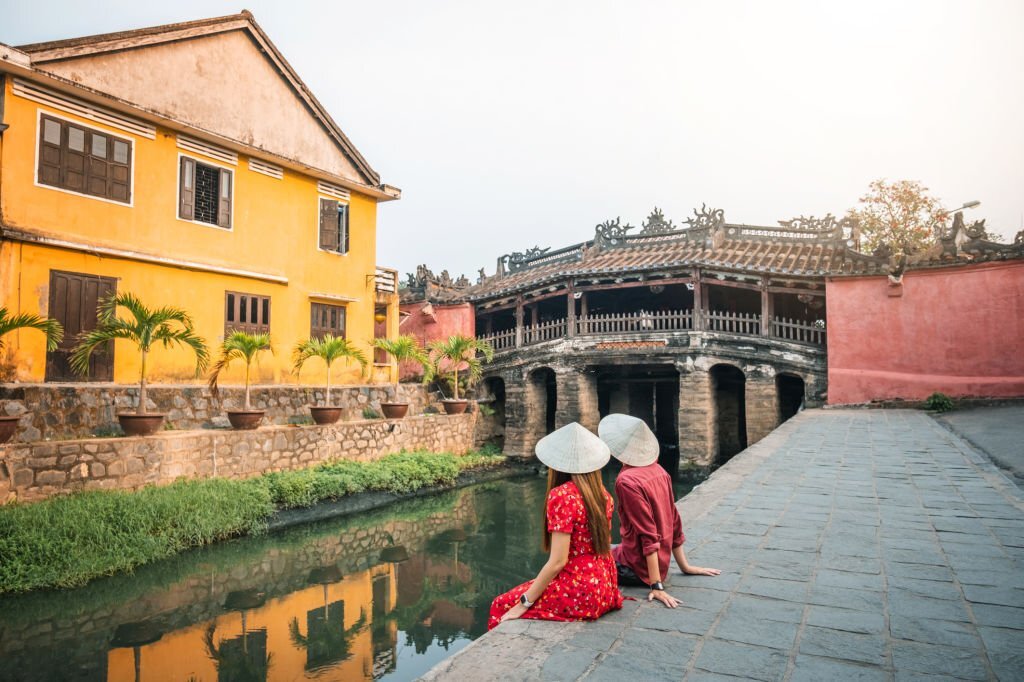
Phung Hung House
This two-story house was built in the 18th century. More than eight generations of the same family have lived there since then. However, what makes this place truly unique is the fact that it’s more than a museum: it’s still a home and the tour guide is part of this eighth generation. Following Ms. Anh, as she shows you her family’s home, you will see a distinct Japanese influence on both the architecture and the décor.
Tan Ky House
The house is over 200 years old and has been in the hands of seven generations in the same family. You will be able to admire details such as the pulleys that lift the furniture to avoid flooding or the beautiful carved wooden balcony. The family members always reside in the old house that gives life to the history of this property in a fascinating way.
Central Market
If you are a foodie, there may be no better destination in the city than the central market. Located along the river, the large market is full of stands. The merchants serve a very wide variety of dishes at extremely low prices, including Hoi An’s specialty: Cao Lau. This noodle dish made from vegetables and pork is fresh, delicious and unforgettable.
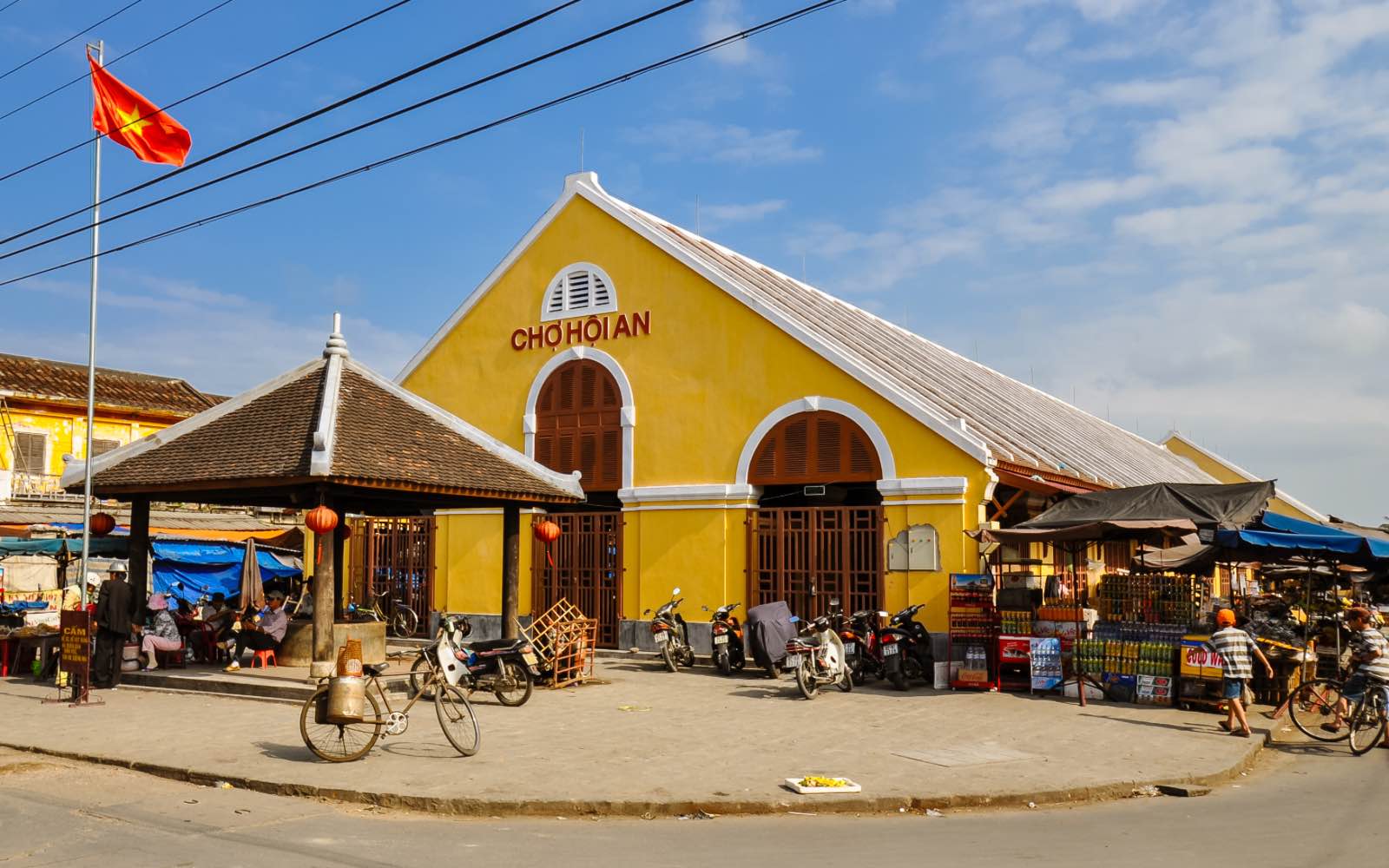
Night market
The market is located on Nguyen Hoang Street, just in front of the Japanese Covered Bridge. At 5 pm, more than 500 vendors open their stands and sell everything from souvenirs to clothes to fresh foods. Perhaps the best-selling item is the paper lantern, which shines brightly after dark. Take it home and remember the colors and dynamism of the Hoi An night market.
Fujian Assembly Hall
This place was the gathering place for residents, traders from a specific region of China called Fujian. Later, the meeting room was turned into a religious site to honor the deity, Thien Hau. It is still a popular place among visitors and residents of origin and descent of Fujian.

Cantonal Municipal House
As its name suggests, this house was built by Cantonese immigrants in the 19th century. You will admire the structure as well as the decor, which includes a remarkable dragon made from pottery.
An Bang Beach
One of the busiest beaches in Vietnam is An Bang Beach in Hoi An. It is the perfect place to relax in the sun or for a refreshing swim. Unlike other coastal destinations in Hoi An, erosion is not a problem at An Bang Beach. This means that there is more sand than in many other surrounding coastal sites.
If you’re wondering where to eat in Hoi An, you can dine at several restaurants and cafes, but if you’re looking for an authentic Vietnamese experience, Central Market is the place to be. For only 20,000 VND, you can eat like a king and choose from the tastiest dishes: Cao Lau, Quang noodle, and Banh Xeo. Some specialties of Hoi An:
Cao Lau: Fat, yellow noodles are served with fat pork slices, bean sprouts, raw vegetables, crispy rice pieces, and pork broth.
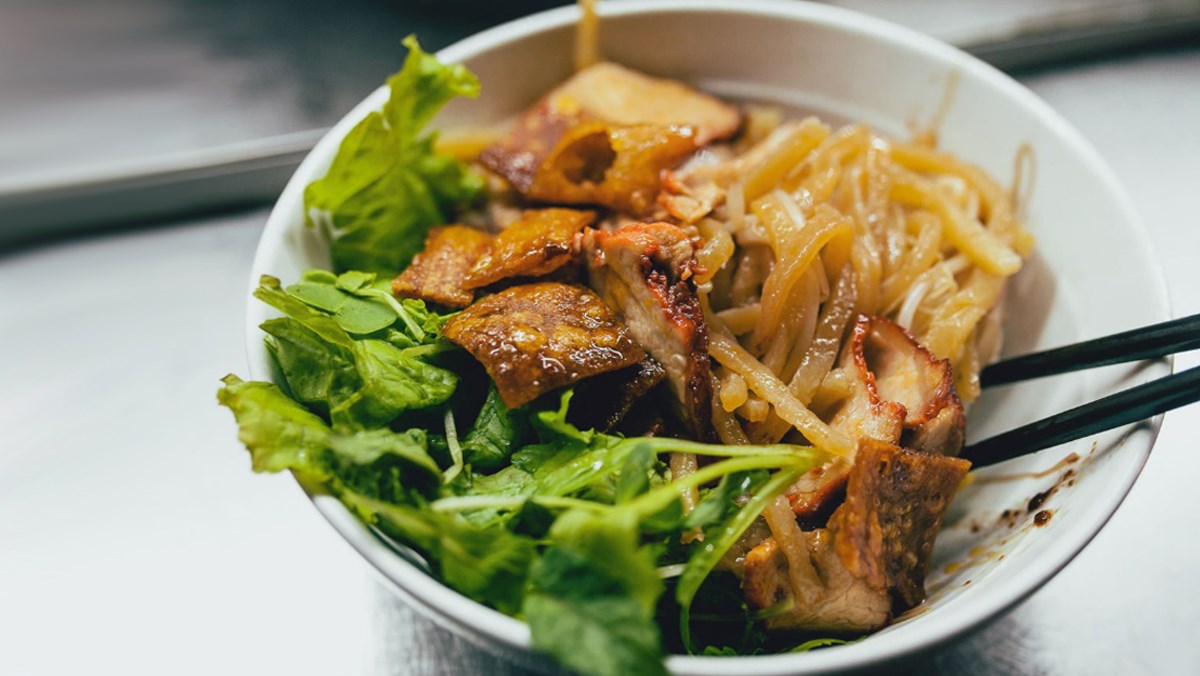
Quang Noodle: A large and thick rice noodle that manages to be soft, slippery and mellow at the same time. It is served with a small amount of very rich broth and is usually garnished with roast pork, fresh lettuce, herbs, and crispy rice cakes.
Banh Vac, also known as white rose balls, is a steamed rice flour dumpling with ground shrimp meat and delicate creases that make it look like a flower.
Banh Xeo: A crisp and fried pancake made of rice flour, water, turmeric powder, stuffed with pork fat, shrimp, diced green onions and bean sprouts.
Com ga: The rice is cooked in a tasty chicken broth and served with shredded chicken (which has been boiled whole), herbs, thin slices of onion and a bowl of broth. Add lime and chili to your taste and prepare for a hearty, comforting meal.

Banh mi: A fusion of French and Vietnamese cuisine, this baguette filled with a selection of mayonnaise, pâté, charcuterie, pork bbq, coriander, herbs, pickled vegetables, chili sauce is a staple throughout Vietnam.